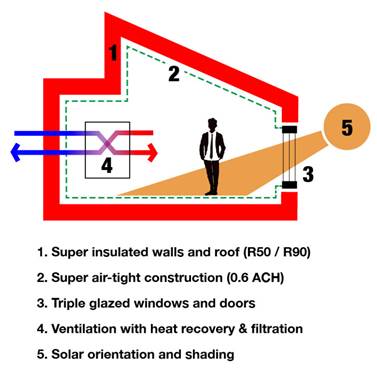Climate change is the challenge of our generation.
Growing evidence is driving international consensus for action to limit global warming below 2°C. Buildings consume up to 40 percent of global energy use and contribute up to 30 percent of annual global greenhouse gas emissions – they are a key piece of the puzzle towards a low-carbon future. Passive House (Passivhaus) buildings consume up to 90 percent less heating and cooling energy than conventional buildings.
Applicable to almost any building type or design, the Passive House high-performance building standard is the only internationally recognized, proven, science-based energy standard in construction. Certification ensures that designers and consultants are expertly qualified to design buildings to meet the standard.
The benefits of employing the Passive House standard include fine-tuned control over indoor air quality and temperature with simple to use and durable systems, making them extremely quiet and comfortable throughout the changing seasons. The reductions in operating costs quickly make up any additional costs associated with construction, and the reduced carbon emissions provide priceless peace of mind.

Diagram by Bryn Davidson, B.Eng. M.Arch. LEED-AP, Co-owner of Lanefab Design/Build
